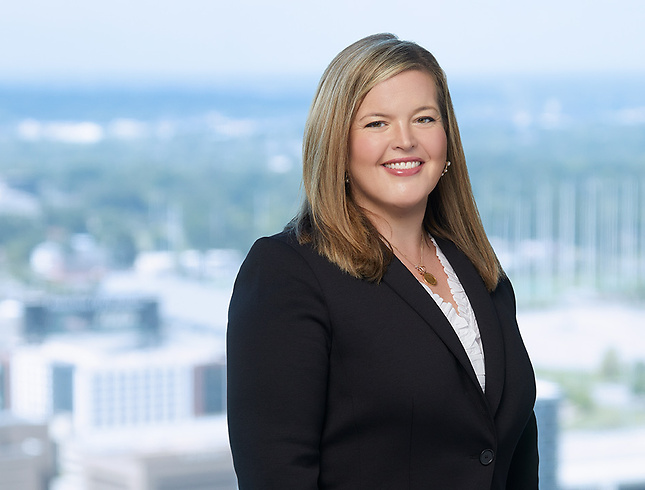Paycheck Protection Program: Where Are We Now?
Over a month has passed since the Coronavirus Aid, Relief, and Economic Security Act (the “CARES Act”) was signed into law, creating the much-discussed paycheck protection program (“PPP”). The PPP has been subject to criticism over its rollout, with many arguing the funds are not reaching small businesses with the greatest need. In addition to facing practical complications in accessing financial institutions offering these loans, applicants must navigate a stream of guidance from the U.S. Department of Treasury (“Treasury”) and Small Business Administration (“SBA”).
Here, we set out certain aspects of the PPP loans that have been clarified by the Treasury and SBA guidance that exists to-date and highlight the significant areas of uncertainty that remain where this program is concerned.[1] All applicants should keep in mind that PPP loans are subject to ongoing rulemaking and guidance by Treasury and the SBA and therefore should pay close attention as further guidance is issued by these agencies.
What We Know about PPP Loans Now
Treasury and the SBA have been releasing guidance clarifying various aspects of these PPP loans. The following covers some of the most significant areas in which the agencies have released guidance.
First: An applicant must count all of its own employees plus the employees of both its U.S. and foreign affiliates, unless it fits into one of the affiliation rules exceptions provided for in the CARES Act.
In Question 44 of the PPP Frequently Asked Questions guide (the “FAQs”) provided by Treasury and the SBA, the agencies clarified that employees of foreign affiliates, as well as employees of the applicant-business itself and its U.S. affiliates, should be counted in determining whether a business meets the general 500 or fewer employees test[2] for PPP eligibility. This resolved unclear language used in the initial Interim Final Rule posted on April 2, 2020 (the “Initial IFR”) that suggested an applicant could possibly count only those employees whose principal place of residence is in the United States for purposes of determining its PPP eligibility. Notably, language in the Initial IFR did not reference the affiliation rules at all, and the standard affiliation rules at 13 CFR 121.301(f) applicable to SBA business loans, such as PPP loans, contemplated that foreign affiliate employees should be counted for purposes of determining the number of employees a business has.
If an applicant submitted a now-pending PPP application on the belief that it need not count employees of foreign affiliates, that applicant should consider submitting a revised application, or, if it determines it exceeds 500 employees upon inclusion of foreign affiliate employees, and it cannot otherwise benefit from any exemption to the affiliation rules under the CARES Act, that applicant should withdraw its PPP loan application. In the event an applicant applied for and has already received a PPP loan in part upon the belief that it had 500 or fewer employees because it need not include foreign affiliate employees, this business should consider whether it is better off returning the PPP loan proceeds by May 14, 2020 or, alternatively, keeping the funds on the basis it may be able to defend itself by arguing it was relying on guidance up to the date of its application, as it is entitled to do so under Question 17 of the FAQs. It is unclear how this “guidance to-date” defense will function, and its application, particularly in this circumstance, remains to be clarified.
Second: When an applicant certifies that the “[c]urrent economic uncertainty makes [a PPP] loan necessary to support the ongoing operations of the [a]pplicant,” it must make this certification in good faith, after considering its current business activity and any means of accessing other sources of funding without causing a significant detriment to its business.
When a business applies for a PPP loan, the individual acting for the business must certify on the application that the loan is necessary to continue operations in light of the current economic uncertainty. The CARES Act gave no guidance on what exactly should be considered in making this certification.
In Question 31 of the FAQs, Treasury and the SBA provide some clarity: “Borrowers must make this certification in good faith, taking into account their current business activity and their ability to access other sources of liquidity sufficient to support their ongoing operations in a manner that is not significantly detrimental to the business. For example, it is unlikely that a public company with substantial market value and access to capital markets will be able to make the required certification in good faith, and such a company should be prepared to demonstrate to [the] SBA, upon request, the basis for its certification.” Question 37 of the FAQs further clarifies that private companies should also look to Question 31 for guidance.
Ultimately, each business must analyze the economic impact of the COVID-19 pandemic upon it, taking into account its cash reserves, pre-existing means of accessing additional capital, whether by credit or additional investment, that will not be “significantly detrimental” to the business, foreseeable capital and operating expenses, and any other relevant conditions and circumstances in considering how the economic downturn has affected a business.
It is recommended that a business document its need for a PPP loan, taking into account this guidance, whether in the form of resolutions authorizing the PPP loan and/or a memorandum describing the necessity of the loan. For example, an applicant is recommended to document, among other relevant information, the following, as applicable:
- How increasing debt would harm the business and future operations;
- Existing and anticipated non-collection on accounts receivables;
- Customer requests for extensions on payments due and payable;
- Shortfalls in budgeted revenues;
- Anticipated workforce reduction in absence of a PPP loan;
- Anticipated pay cuts for workforce in absence of a PPP loan; and
- Inability to meet anticipated capital expenditures and/or operating expenses.
The above list is intended only as an illustrative set of considerations. You should carefully document how the COVID-19 crisis has impacted your business and retain those documents in your records.
Notably, the SBA intends to issue additional guidance on this certification.
Third: An applicant who applied for and received a PPP loan, but now doubts that it is an eligible recipient, may return the loan by May 14, 2020 and avoid penalties. Borrowers should look out for future guidance on the PPP loan certification described above.
Question 31 in the FAQs provides a safe harbor for borrowers who applied for a PPP loan prior to April 24, 2020 and repay the loan by May 7, 2020. These borrowers will be deemed to have made the certification on need in good faith. Question 43 extends the period for repayment to May 14, 2020 and explains that the SBA anticipates it will provide further guidance on this certification prior to that date.
Fourth: A single corporate group cannot receive more than $20 million of PPP loans in aggregate.
An Interim Final Rule released on April 30, 2020 clarifies that a single corporate group is limited to $20 million, in aggregate, of PPP loans. For these purposes, a single corporate group includes all businesses that are majority owned, directly or indirectly, by a common parent. This limitation applies to any PPP loan that had not yet been fully disbursed as of April 30, 2020.
An applicant to which this rule applies should alert its lender if it has applied for or received PPP loans in excess of this limit and should also withdraw or cancel any pending application that would cause the applicant not to comply with this rule. Note that this rule applies regardless of whether a business is eligible for an exemption of the affiliation rules under the CARES Act.
What We Do NOT Know about PPP Loans Now
Confusion continues to abound with these PPP loans. It will be important to monitor future guidance, in particular as concerns the following significant areas where ample uncertainty remains.
First: Specific guidance on forgiveness of these PPP loans remains to be issued.
In light of the paucity of guidance on forgiveness, borrowers would be well-advised to retain meticulous records in order to justify applications for forgiveness. The CARES Act clearly contemplates that a borrower must, at minimum, be able to provide documentation verifying “full-time equivalent employees” on its payroll and pay rates during the forgiveness period (generally, the 8-week period following disbursement of the PPP loan), including (i) IRS payroll tax filings and state income, payroll, and unemployment insurance filings and (ii) any documentation proving payment of covered expenses (e.g., cancelled checks, receipts and any other documents verifying forgivable payments of mortgage interest, rents and utilities). Future guidance may provide for any further documentation. In addition, it remains unclear how a business should count its “full-time equivalent employees” for purposes of PPP loan forgiveness.
In significant part, the Initial IFR provided that at least 75% of the forgiveness amount of the PPP loan must be used for payroll costs (as defined in the CARES Act). An open question exists as to how to calculate the forgiveness amount for borrowers that discover they cannot expend 75% of the forgiveness amount on payroll costs.
Treasury and the SBA have also expressed an intention to issue further guidance applicable to a scenario where laid-off employees of a PPP loan borrower refuse to return to work after the borrower offers to re-hire them (at the same wage/salary and same number of hours). Question 40 of the FAQs previews that such a rule will require that the borrower must make a good faith, written offer to re-hire employees, and, if rejected by such employees, the borrower must document that rejection.
Second: It is unclear how the “guidance to-date” defense will function.
Question 17 to the FAQs provides: “Borrowers and lenders may rely on the laws, rules, and guidance available at the time of the relevant application. However, borrowers whose previously submitted loan applications have not yet been processed may revise their application based on clarification reflected in these FAQs.”
It is unclear what will be required of the borrower to succeed on this defense. Moreover, if a borrower does not update its not-yet-processed application on the basis of the updated FAQs, does it forfeit this defense? A borrower should weigh this uncertainty against the cost to it of returning PPP loan proceeds or withdrawing its PPP loan applications in the event that it develops substantial uncertainty as to whether it qualifies for a PPP loan upon further consideration.
Third: How can PPP loan proceeds be used after June 30?
The CARES Act suggests that any unused PPP loan funds existing after June 30 (and which were, of course, not forgiven because not expended, regardless of whether on allowable expenses or not) may be used for general working capital purposes. However, it remains unclear what restrictions may remain on PPP loan proceeds after June 30, and businesses should plan to allocate PPP loan proceeds to allowable expenses and, as much as possible, forgivable uses (i.e., payroll costs and certain mortgage interest, rent, and utilities expenses).
These PPP loans are a generous resource for those businesses that are eligible for them, but borrowers should keep in mind that this resource comes with various strings attached, and many of these strings continue to weave an increasingly complex pattern. Every borrower should keep abreast of the guidance on this program as it develops and work with its advisors and lender to determine how it should adjust its position, as needed, to remain in compliance with the rules.
[1] This alert is based on guidance issued as of May 6, 2020 at 4 p.m. EDT. Guidance on PPP loans is constantly forthcoming, and the provisions discussed herein are subject to change.
[2] Certain businesses may be entitled to a higher number of employees and remain eligible for PPP loans, depending upon their NAICS codes.


